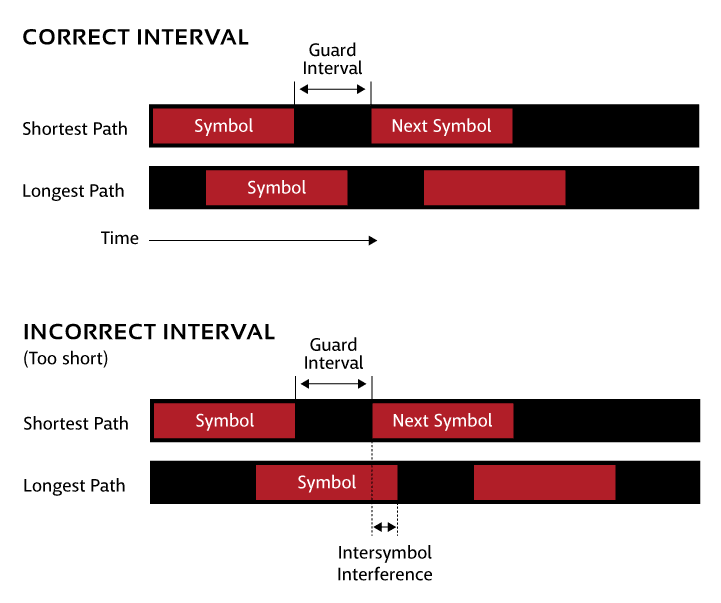Introduction to COFDM
COFDM: CODED ORTHOGONAL FREQUENCY DIVISION MULTIPLEXING
Breaks a broadband channel into many discrete, narrow sub channels or subcarriers
Coded Orthogonal Frequency Division Multiplexing (COFDM) is an alternative to a single carrier waveform which is often used because of the limitations of single carrier systems for broadband applications where multipath is present. These limitations are due to the frequency selective fading that causes widely varying receive signal strength across the broadband channel, as well as the inter-symbol interference that can occur in environments with long delay spread.
WHAT IS CODED ORTHOGONAL FREQUENCY DIVISION MULTIPLEXING?
COFDM breaks a broadband channel into many discrete narrow sub channels or subcarriers, as depicted below.
The term orthogonal refers to the fact that each of the subcarriers is created in a way that inherently does not interfere with the other subcarriers without the need for filtering each one in the frequency domain as is done traditionally to isolate channels from each other.
The frequency selective fading problem is solved by combining the use of subcarriers with the use of Forward Error Correction coding, which is the C in COFDM*. FEC coding transforms a given number of bits into a larger number of bits which contain information redundancy. Roughly speaking, if x bits are turned into 2x bits, half of these can be lost and still the original data recovered. This scenario is called a rate ½ code.
Turning every 5 bits of data into 6 bits would be a rate 5/6 code. A 5/6 code allows more user data to get through but is more susceptible to lost or corrupted bits. This FEC coding is used to spread the data among the subcarriers of a COFDM system. In this way, even if a particular subcarrier suffers from frequency selective fading to the point that it is totally lost, the data can be recovered because it has been redundantly coded onto other subcarriers.
COFDM wireless also provides a practical solution to the problem of inter-symbol interference (ISI). This problem can be demonstrated with the following illustration:

Between each transmitted symbol, a silent guard interval is left so that at the receiver there is time for a copy of the symbol arriving on a longer reflected path to be received without overlapping with the next symbol. The above illustration shows what happens at the receiver when the guard interval is long enough versus when it is too short resulting in ISI.
The problem with a broadband single carrier system is that the symbol length becomes very short for a given data transfer rate. In practical scenarios, the guard interval necessary to account for path length differences can become as long or longer than the symbol. This greatly decreases the amount of data that can be sent because the silent period starts to dominate.
The symbols of a wireless COFDM system become longer in direct proportion to the number of subcarriers used. In this manner, a guard interval of a given length will have much less of an impact on the amount of data that can be transmitted, as the data carrying symbol dominates over the silent guard interval.
*COFDM is sometimes used as a synonym for DVB-T within the wireless video community. In reality all practical OFDM based systems utilize FEC coding and are thus COFDM.
WE DON’T JUST CLAIM SUPERIORITY. WE PROVE IT.
Not only do we build superior technology, we help you get the most from it. Out-of-the-box functionality. Ongoing support. Relentless research and development. Contact our sales team to discover how we’re leading the MIMO revolution.


